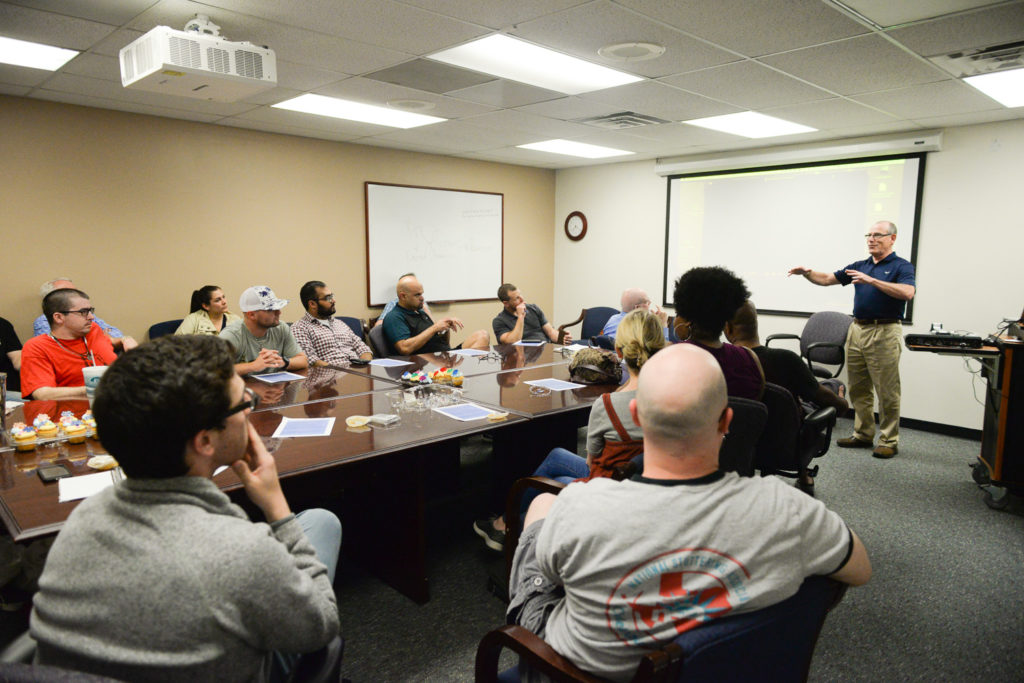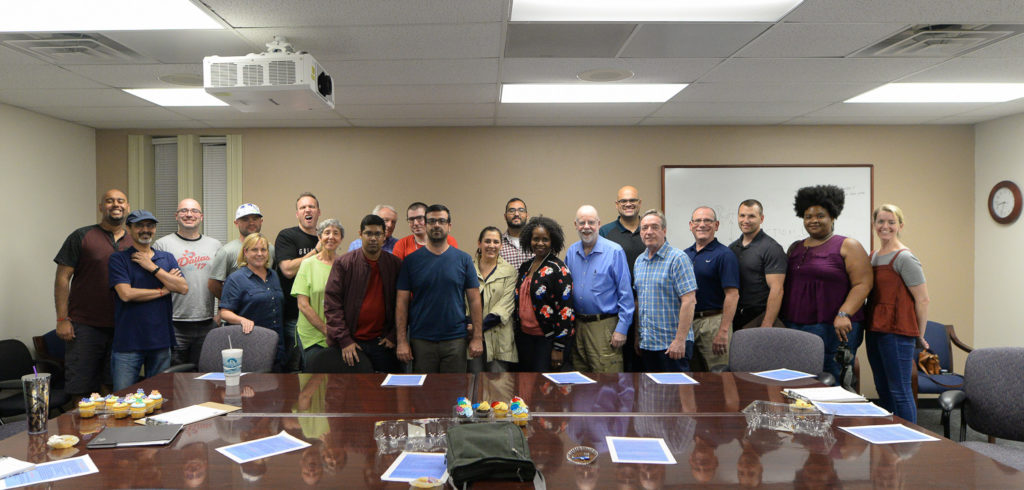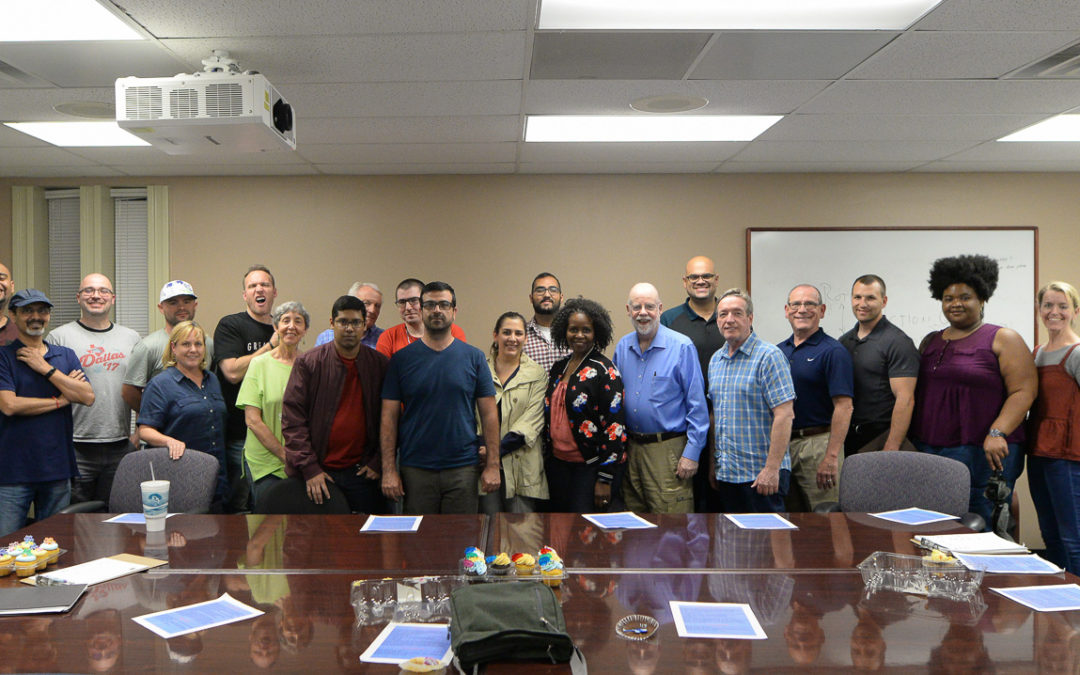Last night the Dallas Chapter of the National Stuttering Association held it’s April monthly meeting and here’s a quick recap of what happened!
Like every month we met at Callier Center, our home for the past 37 years, and that number has a special significance because last night we were celebrating 37 illustrious years of our chapter! To celebrate the special occasion we had some delicious cupcakes, and our largest group of the year: 23 members, including 2 SLPs and 6 first-timers—Whoohoo!
Also, in celebratory fashion, our meeting was lead by Lee Reeves, a person who 37 years ago decided that this city needed a support group for people who stutter, founded our chapter, and forever changed the stuttering community.
Lee’s theme for the night was “From Victim to Survivor: The Process of Change.”
If you are somebody that has attended our meetings before you know how powerful of an impact they can have, but have you ever wondered how does the process of changing oneself works? What’s the science behind it?
Well, Lee has done some research, and he told us all about it.

Understanding stuttering is a process that spans many, many years, and while it can be very unique and personal, there are some very distinctive phases, and having some knowledge about where we are on the journey can be very helpful. Lee divided the process of change in 5 stages:
1. Precontemplation. Deny, deny, deny! It’s when you tell yourself that there is no need for a change, and that can be because you tried before and failed, or because you don’t think there is a viable solution to your problem.
2. Contemplation. Ok, there IS a problem. You start to analyze yourself, becoming aware of the pros and cons of continuing on the path you are on. Is it worth trying to change?
3. Preparation. Maybe you have decided to search online, just to see what’s out there. Maybe you have found an SLP, or the contact information for a local support group…. but you are still not ready to actually show up, or call them. This can take months or even years for some. (We have all been here, haven’t we?)
4. Action. The decision is made an action is taken. You talk to people, show up to a meeting or decide to start therapy.
5. Maintenance. You showed up to your meetings/therapy and you have decided that the work is worth the effort and you continue showing up working towards your goal.
While stage 1 and 2 are mostly lonely endeavors, 3 to 5 is where our chapter enters the picture and when we start the process of going from Victim to Survivor. Attending a support group is when one discovers that there are others who experience the same things we are going through and when the phrase “you are not alone” start to work it’s magic.
Lee talked how powerful it can be finding role models (“I want to be like THAT person”), the importance of being self-aware enough to re-frame past experiences (“ok, maybe it wasn’t THAT bad in school”), and finally the transition from being the new guy in the group to somebody that uses it’s own experiences to help others—perpetuating the virtuous cycle of self-help!

This topic was very deep and sparked a dynamic discussion about where in the journey are we, what “recovery” could look like, and the many definitions “free from stuttering” can have. If time wasn’t an objection we would probably be still there talking, but all things must come to an end and we had to rush to exit the building before we were locked in!
Thank you to everyone who attended, to the ones that couldn’t but were there in spirit, and to the ones that have come and gone to continue their journey in different parts of the world.
You are never alone.

Dallas NSA

